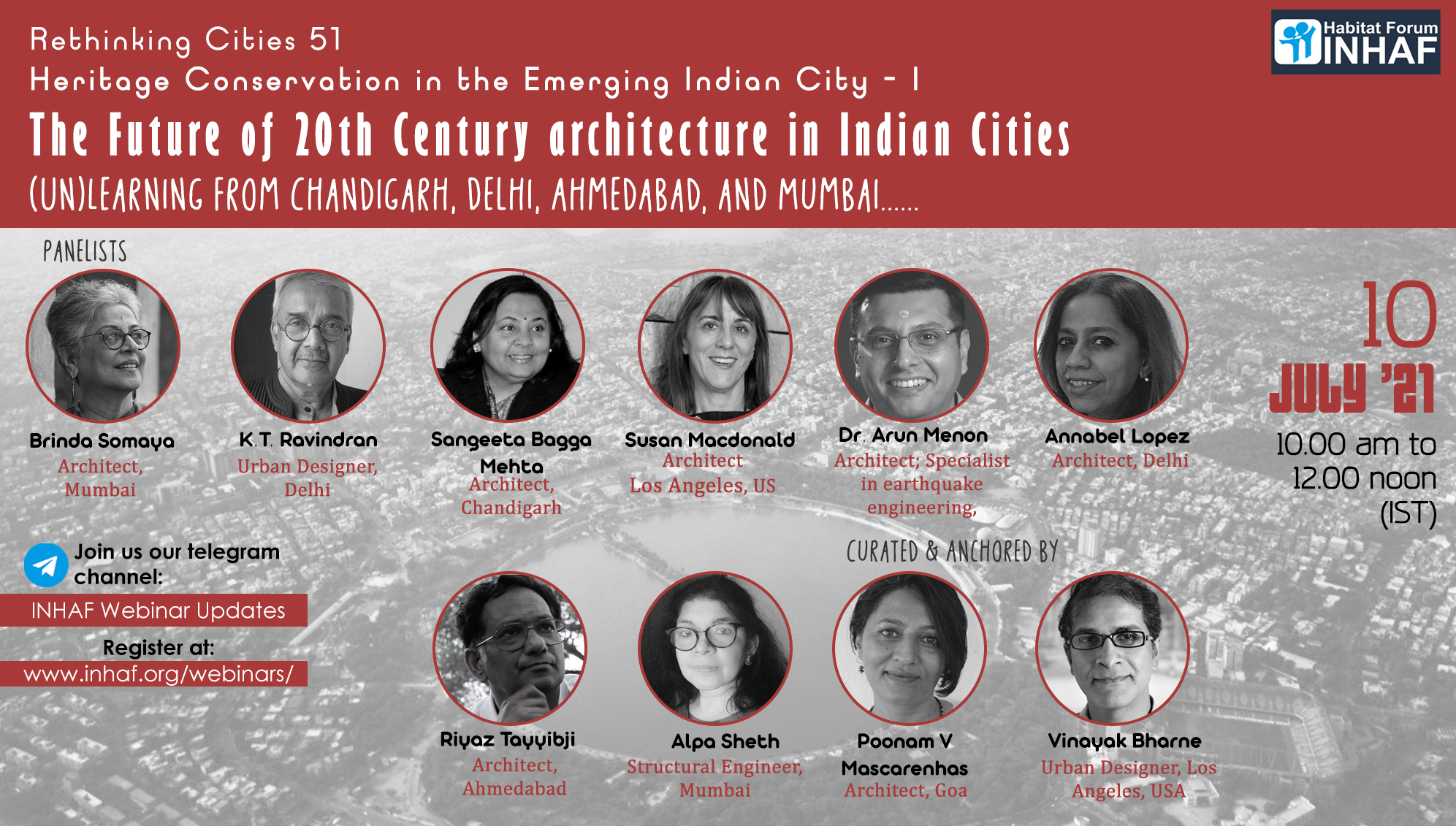
Local Time
- Timezone: America/New_York
- Date: Jul 10 2021
Heritage Conservation in the Emerging Indian City – I : The Future of 20th Century architecture in Indian Cities – (Un)Learning from Chandigarh, Delhi, Ahmedabad and Mumbai
This session will straddle the apparent contradiction of UNESCO World Heritage designations versus the demolition of iconic buildings in India’s recent history.
For example, the Chandigarh Capitol Complex, designed by Le Corbusier was inscribed a UNESCO World Heritage Site in 2016. The Victorian Gothic and Art Deco Ensembles of Mumbai – a collection of 19th-century public buildings in the Fort precinct, were declared a UNESCO World Heritage Site in 2018.
Meanwhile, the Hall of Nations and the Nehru Pavilion in New Delhi were demolished on April 24th 2017 amidst massive protests by the Indian and international architecture community. 2019 saw the declaration of the Redevelopment of Central Vista Project, with more demolitions planned. And 2020 grappled with the planned demolition of IIM Ahmedabad’s iconic ensembles, designed by Loui Kahn in the 1970’s.
As historian Narayani Gupta notes in her article (https://thewire.in/urban/of-icons-and-iconoclasts-saving-delhis-modern-heritage), do we need to always destroy to build, subsuming ‘heritage’ under ‘urban development?’ Or can we shape a city where icons from different pasts live together happily.
While discussions on ascertaining the parameters for India’s post-colonial architectural ‘heritage’ continue, the ensuing climate crisis and looming pandemic are shedding new light on this subject. With the building industry contributing to almost 60 % to the carbon emissions, every existing building is of great value as a carbon neutral resource. With South Asian nations – accommodating a majority of the world’s population – expected to be most affected by erratic weather conditions, ‘Sustainable Development’ is now an urgent goal.
The Constitution of India mandates each citizen’s fundamental duty to ‘save and care for its heritage.’ The 73rd and 74th amendments have mandated citizen participation in the nation’s development. And yet, crucial decisions about the past, present and future of our cities remain disconnected from their residents.
Can professional institutions and citizen groups come together to stop mindless demolitions, and become ‘custodians’ of a ‘City of Parity’- developed in alignment with ‘Sustainable Development Goals’? Is it time for India’s civic society to claim back its role and participate in the shaping the future city? What can we learn, or unlearn, from Chandigarh, Delhi, Ahmedabad and Mumbai?
